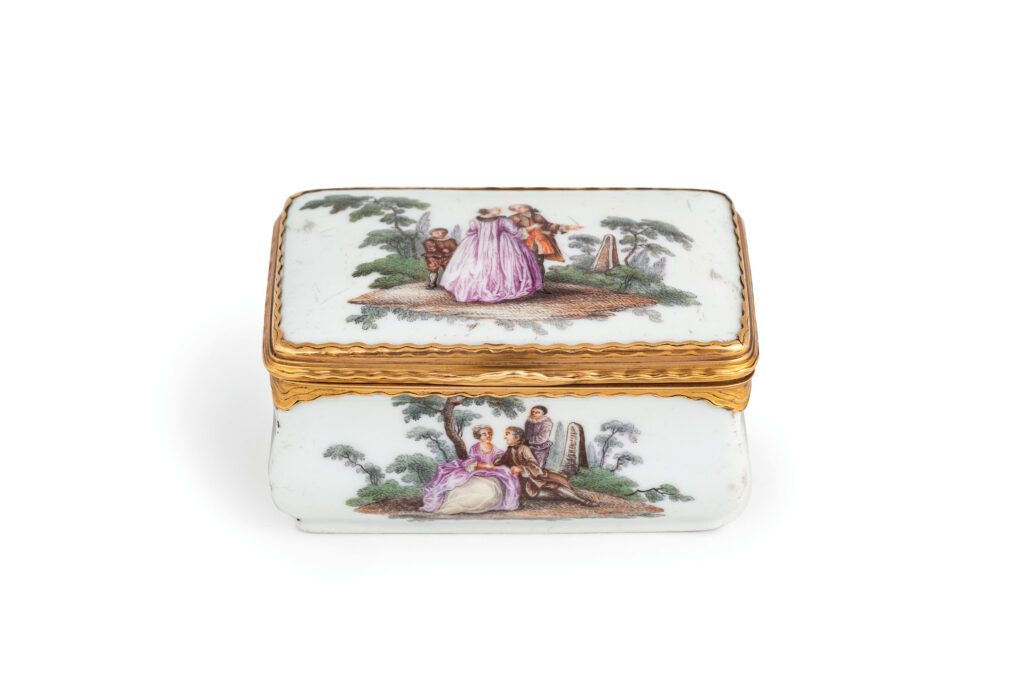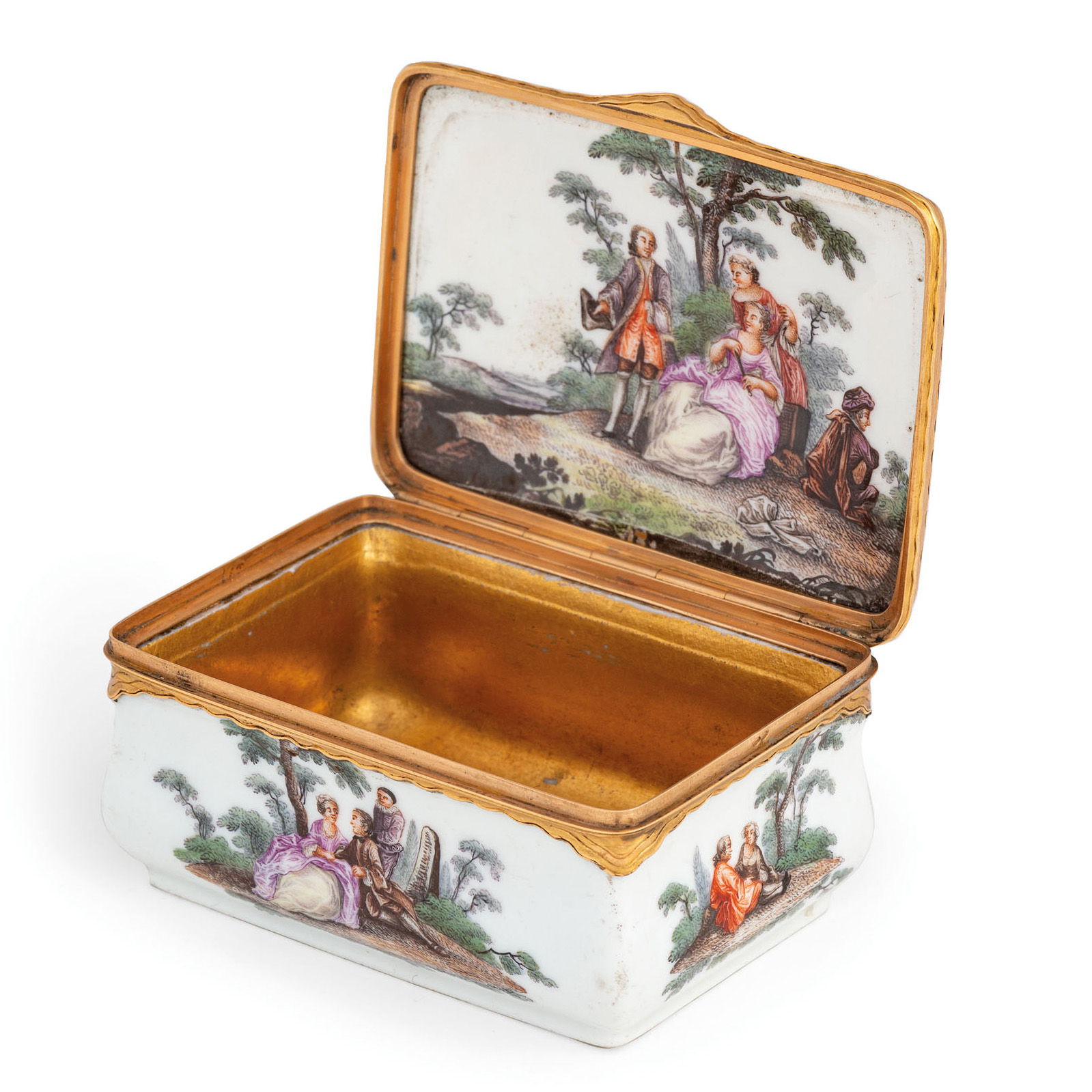The production of snuff boxes and more generally of “objects de vertu” is among the most interesting and decorative of the Meissen manufactory: the first mentions in the factory papers of this type of production date back to at least the 1830s. Extremely pleasing and of excellent workmanship is, in this regard, the gold-mounted snuff box in polychrome porcelain with a wavy shape and decorated inside and out with courtly scenes in the Watteau style produced by the Royal Saxon factory in the mid-18th century (lot 99, estimate Euro 4,000 – 6,000).
Another porcelain close in taste to the specimen in the auction – also mounted in gold and datable to c. 1750 – is now in the Rothschild collection at Waddesdon Manor (R. J. Charleston, Meissen and other European porcelain, London – Freiburg, 1971, fiche 17, p. 72). The use of gold for the mount (instead of copper or gilded silver) also confirms the attention paid to this type of work, intended for an aristocratic clientele. Lastly, see also the specimens in the Gianetti collection in Saronno (L. Brambilla Bruni, Porcellane di Meissen, Saronno, 1994, cards 107-108, p. 122): two snuff boxes, both datable to around 1740, decorated with port scenes and with gilded silver mounts.

Lot 99 | Polychrome porcelain snuffbox, Meissen manufacture, mid-18th century, wavy shape and decorated with Watteau-style scenes inside and out, mounted in gold | Estimate €4,000 – 6,000

Lot 99 | Polychrome porcelain snuffbox, Meissen manufacture, mid-18th century, wavy shape and decorated with Watteau-style scenes inside and out, mounted in gold | Estimate €4,000 – 6,000
Giovanni Marcon, who was born in 1771 and died in 1830, who seems to be correctly attributed the decoration of the bi-layered porcelain ecuelle with cameos and roundels with classical myths that was produced at the Antonibon kilns in Nove di Bassano around 1780 (lot 95, estimate Euro 800 – 1,200), is truly one of the most interesting painters on ceramics on the Italian scene between the 18th and 19th centuries. His evocative ability, often obtained by starting from noble prototypes such as the works by Giuseppe Zocchi, Giuseppe Zais, Francesco Zuccarelli or Giovan Battista Tiepolo, translates into fast but precise strokes capable of depicting port scenes, elegant or peasant life with truly remarkable realism. Or, as in this case, the painter immerses himself in the most up-to-date neoclassical aesthetics, painting enchanting scenes taken from myth: but even here the courtly source does not frighten him, and gods and goddesses appear much closer to us, almost at hand, more than we are used to considering them.

Lot 95 | Ecuelle in polychrome porcelain, Antonibon manufacture, Nove di Bassano, around 1780, double-handled and with cameo decoration and roundels with classical myths | Estimate €800 – 1,200

Lot 95 | Ecuelle in polychrome porcelain, Antonibon manufacture, Nove di Bassano, around 1780, double-handled and with cameo decoration and roundels with classical myths | Estimate €800 – 1,200



